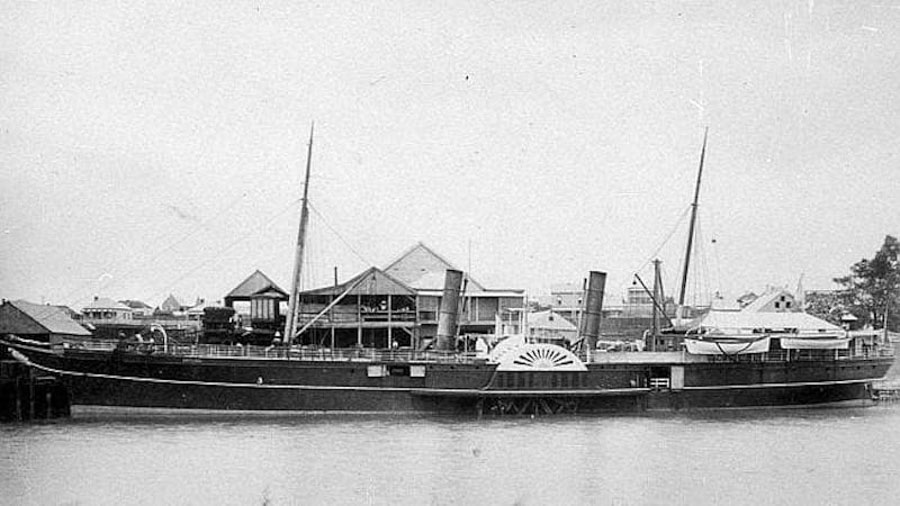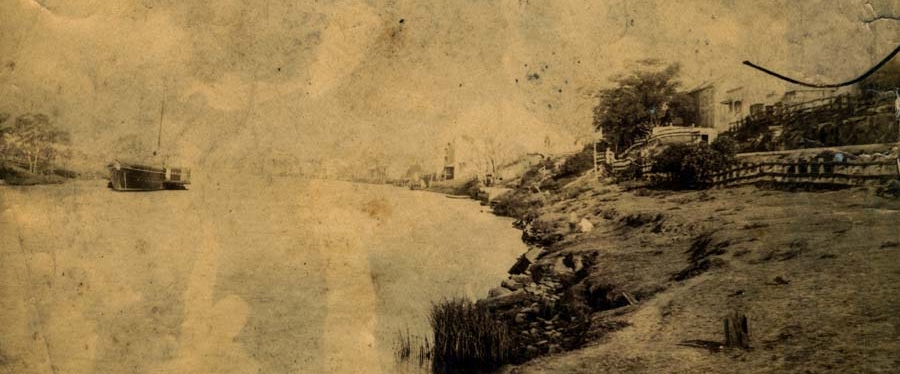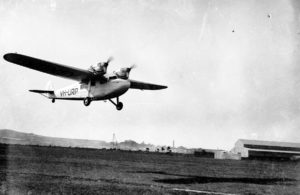Dawn was breaking when the City of Maitland turned to enter the river channel, in the shadow of Nobbys. Seaward the grey, steel-like colour of the ocean was beginning to brighten. Daffodil and golden tints were spreading over sky and water. Soon the sounds of sailors scrubbing down decks came to the ears of the two girls as they sat on the bridge in the lee of the “dodger” watching the world awaken to another day. For some time they had seen dimly the hills on which part of Newcastle stands. Now those were gradually becoming more clearly outlined. The town itself could be seen, smoking and misty in the morning light, looking like a gigantic castle built on hills, while its outskirts trailed down to river and beach level.
That passage is a quote from the book Moira of Green Hills, by Will Lawson and Tom Hickey, a chirpy little story (published in 1950) about an Irish girl’s adventures in and around Morpeth in the 1880s. I like the book for the atmosphere it evokes of old times, and some of the savour seems so authentic I feel there must be an element of eyewitness in it. Perhaps that came from Will Lawson’s co-author, Tom Hickey, a Morpeth-born maritime enthusiast. Or maybe it came from “Our old friend Bob McNamara”, to whom the book is dedicated.


The steamer swung to her marks and straightened up to enter the port, a long lazy swell which ran there seeming to hurry her along as it surged into the entrance. The beat of the engines had not slackened, the swirl of water at the bows and from the paddles still made a soft, rhythmical sound. As she entered the port, ahead of her, from the tangle of ships, one vessel could be seen in tow of a tug, separating herself from the crowd of moored ships. The captain turned his head and said abruptly: “The Kate Tatham, bound for Callao”.

After a brief visit to Newcastle the Irish girls are on their way upstream:
Just above Newcastle the river widened, then split into two streams, the South Arm and the North Channel, the steamer taking the latter route past Fern Bay and Fern Island. A large island separated the channels. . . . It was almost lunch-time when ahead of them the river widened, and houses and buildings could be seen on the green bank. . . . They watched and saw the town take shape; the steamer paused to land passengers and cargo, then sped on. Lunch was over when they were on their way again, and the captain told them that they were approaching a sharp turn in the main river, some miles above Raymond Terrace.
The next section is the part that interests me most. It’s where the helmsman, Swede Ole Jonsen, takes the 1200-ton ocean-going ship around “The Elbow” to the Green Hills and Morpeth.
Swiftly they approached the place where the higher hills made the river narrow. . . . Into what seemed a cul-de-sac of trees and green farms beyond, the City of Maitland tore. Soon she was heading straight for the bank and the girls held their breath. What if she ran aground? As that thought came into their minds the clean bows swung swiftly away to the right, and around a corner they saw a curving bank, the actual Elbow. Now the skipper clutched the telegraph, but Ole shook his head.
The bows skimmed close against the bank, then swung like magic away from it, spinning like a top, till they headed for a point on the inside of the Elbow. The girls looked back anxiously and saw the stern sweeping through low branches while the bows almost touched the inside point. Further and further around the stern swung, the paddles still roaring at full speed. Another breathless moment and they were through, with the steamer steering straight up Swan Reach, at the head of which lay Morpeth, set on its low green hills and sloping northwards towards the river, an ideal sunny setting for a town. High towers marked churches and mills and warehouses; white cottages stood out against the green fields.
There were four wharves at Morpeth. At three of these steamers were moored, their noisy winches telling of a busy time on hand. At the fourth, lying vacant for the City of Maitland to berth, a crowd of people was gathered.

The usual procedure when steamers arrived at Morpeth was to swing them in the river, turning their heads downstream ready to sail that night. This they usually did at about nine o’clock, reaching Newcastle in time to pick up cargo and sail for Sydney at midnight. Now the side of the high steamer towered over the lower decking of the wharf, though the high decking, only used at flood-time, was level. On this some youths had climbed, eager to get jobs as porters for the passengers’ luggage.
Then she found herself walking up the pathway from the wharf and along broad Swan Street, in which were many inns and stores and few homes; though mostly the houses were on the hilly streets leading from the two main streets which ran parallel with the river. They had crossed the railway line, and Moira saw a train puffing noisily on its way to East Maitland, three miles away, where the mail line ran between Newcastle and the towns in the north to which the line had extended. “It really is a wonderful place,” Moira said at last.

The story moves on, with many heart-flutters and much romance. At one point somebody reads a stanza to Moira from a poem by “a Mr Clyde, about the view from Big Brandy Hill”:
Gripped in the mud of some scarce-hidden shoal, I watched steamship fight to reach her goal – until at last, her vanquished screws subside, held in the place the river seems most wide, to wait the coming of the flooding tide and gain the aid its ebbing stream denied . . .
Moira settles into Hunter life, attending a ball at Duckenfield mansion, the Raymond Terrace regatta (where heavy betting and big prize-money prompts some sneaky cheating) and she hears of the loss of the City of Maitland in a terrible gale. Oh, and she gets married.
If you like picking up snippets of historical atmosphere and you are interested in Morpeth and the old Hunter River steamship trade then find a copy of Moira of Green Hills.




